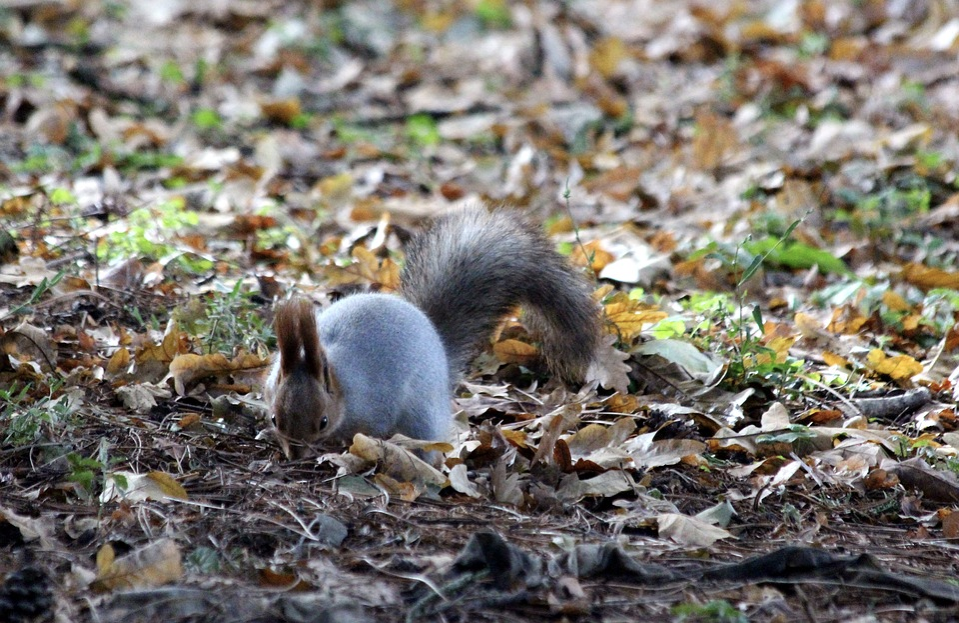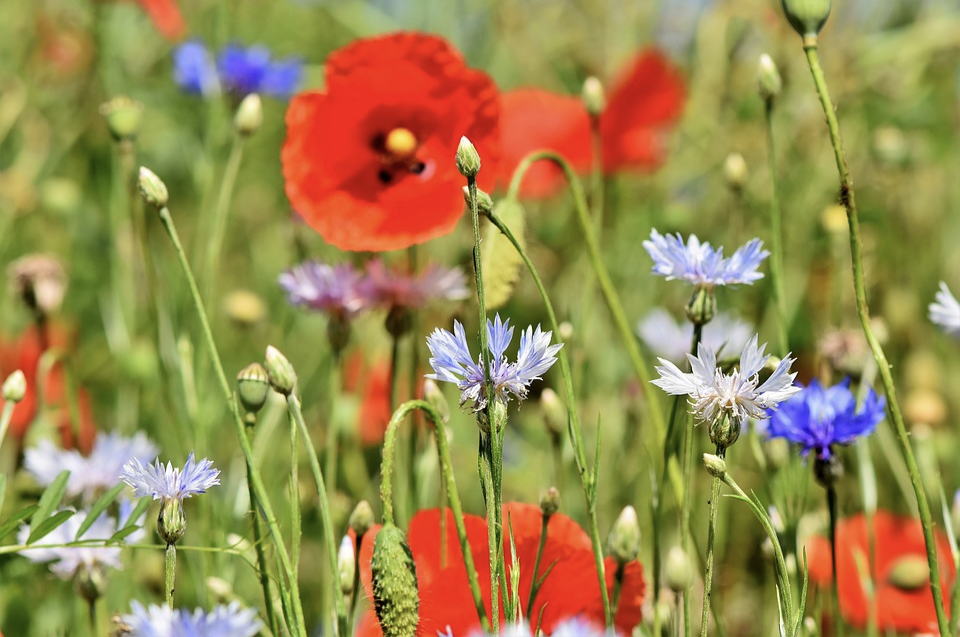Creating a wildlife-friendly edge is a great way to bring animals and insects of all possible species into your garden and restore the natural biodiversity of your area. Such an edge in your garden requires plant diversity in order to attract as many animals as possible. However, to make your garden or, at least, its small area wildlife-friendly, you don’t necessarily have to turn your yard into a wild jungle. Many small changes can be done to help the animals in search of shelter.

Even the smallest garden can offer a multitude of different habitats for wild animals. There are many ways in which you can create yourself diverse dwelling places for animals or help get them created by nature. On the other hand, not only the habitat is important, but also the food sources. Planting diverse plant species provides nutrition for animals and insects. The latter ones later serve as a food source for larger animals.
A flowery meadow is a better alternative to a spotlessly perfect lawn
The best option to bring the plant species of your garden a step closer to diverse is turning a spotlessly perfect homogeneous lawn into a flowery meadow. At first glance, it might seem complicated, but the effort will definitely pay off and later you will spend much less time working in the garden. One of the steps to take is leaving a lawnmower at your garden storage shed. Already this small change can immensely help you to create a place where many insect species and even small mammals can hide and breed, since, surprising it may be, long grass is one of the most inhabited areas in the garden. And a wide-like flowery meadow is a perfect source of nectar for pollinators.
In case a wild look of the garden is not to your liking and you want to shape it out a bit, give priority to garden scissors in order not to disturb the life in the depth of the grass.
The next step would be enriching your lawn with wild local herbs, for this purpose you can use ready-made seed mixtures, but, please, make sure that the plants are perennials. In this way, you can spare the effort and do it only once, after that nature will take a gip on it and each year you will be able to enjoy more and more variety of herbs and flowers in your garden.

Moreover, some of the plants that are known as weeds are also beneficial to wildlife, especially those that are actively blooming. So when it comes to mowing the lawn and removing weeds, less is more.
LESS is a new MORE in gardening
There is a wide range of aspects in gardening that the rule “Less is more” can apply to. One of them is cleaning the garden. A greater part of garden “garbage” actually represents a habitat for many insects and small mammals. For instance, dead plant stems and deadwood are often used by insects as hiding places for hibernation at times of cold. If you have ever happened to disassemble a woodpile, you know for sure how many living creatures reside there. The same holds true for the fallen leaves. Apart from sparing a safe place for animals, fallen leaves provide important nutrients to the soil and protect it from frost and ice.
Though if you do prefer having a clean garden with stones, dead plants, dry wood and twigs neatly collected, you can still be a wildlife-friendly gardener with the help of the following options:
- Composting is also a great way to get rid of a huge part of garden waste and, as a bonus, organic waste from the kitchen. One of the most interesting (from the wildlife-friendliness prospective) types of composting is worm composting.
- Do not remove stones from your garden. Try to collect them in one place. There are decoration ideas that involve stones, for example, you can create an exquisite garden bed adding a bit of soil to your stone pile and planting flowers there.

Another interesting alternative is setting up a gabion. Such a construction can be even turned into a chair, table or bench.
- Deadwood and dry twigs can be formed into a dead hedge, which can serve as both a great decoration and a habitat for many insects and animals and a nesting place for many birds.
To the other ways of making your garden appealing for birds belong: having a lot of bushes and climbing plants on the walls. They can serve as a safe place to build a nest. If you plant berry bushes, they will also provide a food source: valuable nectar for insects and berries for birds.

https://pixabay.com/photos/kookaburra-bird-australia-4761218/
Additionally, if you like DIY-projects, building a bird feeder is another quick and easy way to make your garden more attractive to birds.
Add water features
A great way to attract new species to your garden is by setting up a garden pond. It is a favourable environment for the numerous water dwellers such as frogs, fish, newts and many others, especially if you create a natural-like pond with enough soil and plants. Using rainwater would be beneficial for your water dwellers
To ensure a healthy pH level of the water, make sure that your pond lays in the half-shadow. It is especially important at times of summer heat. Ponds that are disposed to direct sun rays develop pathogenic bacteria and excessive algae, which is harmful to the pond fishes. Moreover, it is important to plan the pond deep enough to have a frost-free zone, which serves as a place for hibernation and, thus, is vital in colder months.

If setting up a garden pond is, for whatever reason, not an option for you, make sure that you still have a small water feature in your garden to provide your garden wildlife with a fresh sip of water, for instance, it can be a bird feeder.
As you see, there are plenty of possibilities to make a step forward on the way to having a wildlife-friendly garden. Choose what works better for you.
